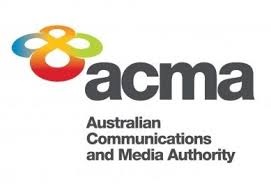 Canberra 25 June 2013. The Australian Communications and Media Authority (ACMA) has identified a further ten regulatory concepts that are now under pressure in the communications and media regulatory framework, on top of the 55 identified earlier in 2011.
Canberra 25 June 2013. The Australian Communications and Media Authority (ACMA) has identified a further ten regulatory concepts that are now under pressure in the communications and media regulatory framework, on top of the 55 identified earlier in 2011.
Speaking at the Ericsson Broadband for All event yesterday the ACMA Chairman, Chris Chapman released a new position paper Connected citizens – A regulatory strategy for the networked society and information economy .
Mr Chapman said “In this paper, the ACMA offers a strategic approach to updating and adapting regulation to deal with 21st century challenges of a networked economy and society.”
Mr Chapman also released an updated companion paper Broken Concepts – The Australian communications legislative landscape. This 2013 update identifies a further ten concepts, which highlights the continuing pressure on regulatory arrangements occurring from ongoing innovation and changing citizen use of communications and media.
Mr Chapman said “This update underscores more than ever the significance of being able to work within existing legislation but continue to adapt regulation to better respond to the changing communications and media environment.”
‘Citizens expect to play, and indeed are playing, a key role in managing their digital communications and information. But they also look to industry suppliers and government for assistance in navigating such a complex, dynamic environment,’ Mr Chapman added.
Managing digital identity, reputation and the expanding scale of digital content are among the issues discussed in the Connected citizens paper released today. It explores how regulation can be adapted and rebalanced to address new and pressing issues arising from digital content and data use in Australia’s networked society and growing information economy.
The ACMA has combined its practical experience and research base to assess how these current tensions can be solved in a regulatory practice framework.
From a regulatory viewpoint, the ACMA sees that the use of mixed approaches within a coherent unifying regulatory practice strategy can offer consistency of approach, while also addressing the need for flexibility to address the new issues of an information economy.
‘Mixed approaches provide the flexibility to adapt and rebalance regulatory effort while working within established legislative frameworks,’ Mr Chapman said. ‘It also provides guidance to develop more flexible, enabling approaches that will assist citizens to have a positive experience with digital media and communications.’
Direct regulation will remain an important tool in dealing with established industry participants and known sectors of communications and content industries. Looking forward, the ACMA will continue to encourage industry-led responses to emerging issues and sees enormous scope for an increased emphasis on communication programs to assist citizens in managing the digital content environment.
BACKGROUND
In a series of discussion papers about communications and media regulatory practice, the ACMA has examined regulatory issues and strategies to assist Australia’s developing networked society and information economy.
In Broken Concepts – The Australian communications legislative landscape, the ACMA identified the pressures arising from media and communications convergence on current regulatory and legislative settings. This analysis has been updated in 2013 and identifies a further ten concepts under increasing strain in regulatory arrangements.
In Enduring Concepts – Communications and media in Australia, the ACMA considered those stable set of public values or areas of public interest that continue to inform and shape regulation in communications and media.
This paper - Connected citizens – A regulatory strategy for the networked society and information economy, is the third in the series, building on the previous analysis. It outlines how regulatory practice can be rebalanced to maintain focus on matters of public interest in the very dynamic, global digital communications and media environment. It outlines a coherent multi-layered strategy and set of tools that the regulator can adopt—working with citizens and industry—to develop solutions to emerging issues in Australia’s networked society and information economy. This fulfils an integral part of the ACMA’s regulatory role in facilitating innovative services in the Australian market, as well as assisting individual citizens to positively manage their communications and media experience.
The ACMA also recently release a series of four occasional papers examining issues in contemporary communications and media. These discussed the impact on industry, consumers and citizens of tensions inherent in the current regulation of mobile apps, near field communications (NFC), cloud computing and services and privacy and personal data. Assessing these tensions is intended to inform the ACMA’s consideration of regulatory strategies to engage constructively with the developing networked society and information economy.
The papers are:
Mobile applications
Near Field Communications
The cloud: services, computing and digital data
Privacy and digital data protections
| < Prev | Next > |
|---|




